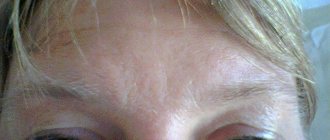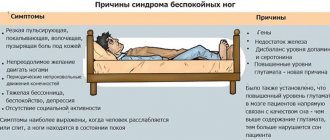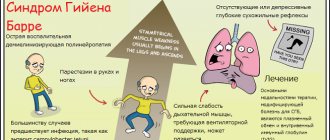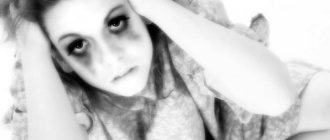It is difficult to imagine a person who cannot laugh, cry or express any emotions. However, there are such people, and they have been given a terrible diagnosis - Moebius syndrome. Photos of such people at first glance may seem quite normal, but during live communication you realize that their face is completely immobilized.
This is a congenital anomaly that develops for the main reason due to the abnormal structure of the cranial nerves. Facial paralysis is one of the most terrible defects of the human body. It is characterized by the absence of facial expressions, the face seems frozen and like a mask.
Historical reference
The syndrome was first described in medicine in 1892 by the German neurologist and psychiatrist Paul Mobius. This anomaly is extremely rare, a maximum of 10-20 times per 1 million children born.
German physician Paul Julius Mobius was born in 1853 in Germany and lived there all his life. The scientist studied the clinical development of progressive paralysis and neuropsychic abnormalities in thyrotoxicosis. He made a description of ophthalmoplegic migraine, calling it Möbius disease.
Alleged reasons for development
The most severe form of pathology is considered to be Moebius syndrome, the causes of which are still unknown to medicine. The opinions of researchers and specialists are divided.
- The first believe that the reason is improper development of the cranial nerves.
- The latter are confident that this is the harmful influence of destructive processes that develop as a result of oxygen starvation of the child in the womb.
- Still others point to the abnormal development of the facial motor center as the main cause of the disease.
Mobius syndrome is a rather old and very mysterious disease. This is a congenital anomaly of the facial muscles, due to which facial expressions are completely absent. Paralysis can be unilateral or bilateral. The person does not react in any way to external stimuli, does not smile, does not frown, and is completely devoid of emotions.
Children have a poorly developed sucking reflex; they cannot swallow food and water on their own due to weakened tongue function. The disease often affects several family members.
Congenital anomalies
Children with Mobius syndrome often suffer from congenital malformations. These may include:
Supporting
Bone and muscle abnormalities of the arms and legs. Club feet, missing fingers, short fingers or even a split hand. Club feet, where the feet turn inward at the ankles, are one of the most common bone deformities.
The breasts on one side of the body may be underdeveloped. Muscle tone is weak.
Facial
A child may have a small chin, a condition called micrognathia. Teeth may be missing or misaligned. The mouth is small with a short or unusually shaped tongue. The palate is high, arched or cleft.
These features add problems with speech development and feeding. The outer ear may be absent or underdeveloped. Hearing loss occurs if the VIII nerve is affected.
Symptoms of the disease
Mobius syndrome is a congenital neurological disorder that is quite rare. People with this pathology lack the ability to move their facial muscles and eyes from side to side. This disease entails serious disturbances in the functioning of the musculoskeletal system and deformation of the feet.
The main clinical manifestation of the syndrome is limited mobility, but there are other, pronounced symptoms that confirm that this is Moebius syndrome:
- anatomical abnormalities;
- deformed foot;
- difficulty swallowing and sucking;
- sensory perception disorders;
- weakening of language functions;
- visual impairment.
There is also a violation of vestibular excitability and lack of tear secretion. The skin of a sick person's face is tense, without wrinkles even when laughing or crying. It does not move in relation to the subcutaneous tissue; the corners of the mouth are always lowered.
The defect is accompanied by limb anomalies such as syndactyly, clubfoot, brachydactyly and extra digits. With partial paralysis, the process mainly involves the muscles of the upper part of the face; the tissues do not sag as much as with an acquired disease.
Diagnosis of pathology
An anomaly such as Moebius syndrome is quite rare. Diagnosis is therefore difficult, especially in young children, and often leads to misdiagnosis, which is more dangerous and requires surgical treatment, for example:
- cerebral paralysis;
- blindness;
- deafness.
Examination and further therapy are being conducted in this direction.
Modern medicine cannot yet fully study the cause of this disease, therefore, it is also not possible to cure it completely. Research and study of the genetic material of patients at the chromosome level is being conducted in search of cell mutations.
Today, doctors set themselves the task of helping parents of children suffering from this syndrome in maintaining normal functioning at every stage of life. This is possible when correcting speech, strabismus, and gait.
Timely diagnosis is necessary not only to detect various forms of developmental disorders, but also to assess the degree of development of mental functions and identify psychological and clinical mechanisms of disorders.
The diagnosis of abnormal development includes psychological, pedagogical and clinical genetic research. It is carried out to determine the level of delay in emotional, behavioral, intellectual and speech development. It also influences the establishment of a connection between the underlying disease and other pathological manifestations, age and neurological condition of the patient.
Asperger's syndrome
Another little-studied condition in which a person becomes withdrawn and does not know how to recognize other people’s emotions. He begins to experience difficulties interacting with other people; he does not want to communicate again. Such a person is usually focused on his own interests and is often fixated on one particular task. The syndrome is not a disease or any serious abnormality, so many researchers argue that this syndrome should not be considered as a disorder, but rather attributed to the individual characteristics of a person.
A person with Asperger's syndrome is antisocial, but can be a genius
So far, no biochemical, hormonal or genetic markers have been found that unambiguously accompany this condition. It cannot be detected even with a brain scan. And as a treatment, scientists offer social therapy aimed at expanding the circle of communication with other people.
At the same time, due to attention to detail, determination and scrupulousness, such children often turn out to be geniuses in their field.
For example, Nikola Tesla and Isaac Newton had Asperger's syndrome Steve Jobs, the founder of Apple, and Bill Gates, who became the head of Microsoft, were also diagnosed with it.
Treatment of Mobius syndrome
Only surgical treatment can help get rid of such an insidious disease as Mobius syndrome. It is impossible to completely cure the disease; in addition to cosmetic deformity, impaired swallowing functions and other body problems that the defect entails, patients experience severe psychological stress throughout their lives. This condition can only be alleviated through surgery.
With the help of plastic surgery, it is possible to create artificial facial expressions, which means that the patient will be able to lift the corners of his mouth, experiencing a feeling of joy. The rest of the face will remain immobilized and expressionless. There are cases that after such procedures, patients are disappointed with the results. Therefore, before the operation, the patient is fully informed about the consequences and possible complications.
Treatment
Early diagnosis and rehabilitation of the child are necessary to get rid of the long-term consequences of Mobius syndrome. The rehabilitation process changes as the child grows to accommodate improvements.
- For the first few days, feeding with a special bottle may be required. Since the baby does not convey feelings through facial expressions, and the mother cannot breastfeed, the mother's relationship with the newborn should be taken into account in the rehabilitation process.
- Lubricating drops should be applied to the eyes frequently. Corneal ulcerations are treated with medication. Surgery for strabismus is usually delayed as it improves on its own.
- Physiotherapy and speech therapy are useful to overcome deficiencies.
- Occupational therapy is required for people with hand and finger problems. Some people need a prosthesis to solve orthopedic problems.
- Psychotherapy is needed to prevent emotional disturbances associated with the condition. Parents should be provided with adequate support after diagnosis and during rehabilitation.
Surgery
Severe cases require surgery. Surgical treatments for facial paralysis include the following:
- "Smile surgery" where a thigh muscle called the gracilis is transferred to the face and connected to the nerves supplying the muscles. Facial massage is necessary so that it can function. This surgery is currently considered the best option for the condition.
- Temporal tendon transfer. The temporalis facial muscle is transferred to the corners of the mouth, a “cross-facial nerve graft” is done in cases of unilateral paralysis.
Other deformities, such as deformities of the limbs and jaw, may require surgical treatment.
More severe cases require surgical intervention in the form of transplantation without muscle mass innervated by motor nerves.
Psychology of social relations
This operation is quite complex from a technical point of view; its duration is rarely less than 8 hours. After this, patients are rehabilitated in the intensive care ward for two days. Fortunately, most people suffering from this defect lead normal lives, work, start a family, and have children.
However, facial expressions are very important for communication and social adaptation. The patient cannot fully develop. Due to the fact that a person is deprived of the ability to smile and has pronounced squint, he is unfairly perceived as an intellectually retarded person. Although mental retardation is observed in only 10% of patients.
It is very difficult for interlocutors to understand what reaction their words evoke and what a person is experiencing at that moment. All this interferes with normal communication, making patients with Moebius syndrome outsiders.
Mobius syndrome in children
Young children tend to express different emotions and quite often, so a child suffering from Mobius syndrome is immediately visible. He does not react in any way to external stimuli, does not cry, does not laugh, and even blinks with difficulty. Only by sounds can you vaguely understand what the baby needs.
From birth, such children have a motionless face, a clear asymmetry, a slightly open mouth, the eyes do not close well, and the child can only follow objects by moving his head. Retardation of mental development is rarely observed; the patient requires massage not only of the face, but also of the tongue, developing articulation classes.
The most unusual medical syndromes
There are people who have problems with their heads, but it is absolutely not their fault and this has been proven by scientific research. Such strange and incredible syndromes will be discussed in that article.
Exploding head syndrome
Exploding head syndrome is an uncommon sleep disorder that until recently has received little attention in the medical literature. This syndrome is characterized by a bursting sound or loud noise that occurs in the head just before going to bed or during sleep. This "explosion" may be accompanied by a flash of light, difficulty breathing, and a feeling of terror.
Experts suggest that this is due to human stress and overexertion. After rest, in most cases, the symptoms of the syndrome disappear.
Foreign Accent Syndrome
The symptoms of this syndrome are a speech disorder, expressed in minor changes in intonation, speed and stress, which is why the patient’s speech is similar to the speech of a foreigner trying to master a foreign language. This syndrome usually appears after a serious traumatic brain injury or stroke, and its peak appears a year or two after the injury. In total, about 50 cases of this disease have been recorded since 1941. Some of them, after special therapy and training, “learned” to speak correctly again, but the majority suffer all their lives.
A fairly well-known case of foreign accent syndrome occurred in Norway in 1941 after a young woman, Astrid L., was hit in the head by shrapnel from a bombing raid. After she recovered from her injury, she spoke with a strong German accent, which dismayed her fellow Norwegians. Another case of foreign accent syndrome occurred in England, when 60-year-old Linda Walker, after a stroke, began speaking with a strange accent more reminiscent of Jamaican than her native English.
Fatal familial insomnia syndrome (fatal insomnia)
This is a rare, incurable hereditary disease, with only 40 families known to be affected. A person finds it difficult to sleep less and less, becomes more tired, suffers from hallucinations and headaches, and after a few years dies from overwork.
In fatal familial insomnia, the thalamus, the part of the brain responsible for sleep, is affected. It is the thalamus that is the communicator of connections between the cerebral cortex and the body, transmitting signals in both directions to the necessary areas of the cortex or parts of the body. It is believed that when falling asleep, the efficiency of impulse transmission through the thalamus decreases. In familial fatal insomnia, this function is impaired.
The disease begins between the ages of 30 and 60 years, on average at 50, and lasts from 7 to 36 months, after which the patient dies. The disease was described relatively recently, in 1986.
Insensitivity to pain
There are a number of people who have a small genetic mutation that turns off the mechanism by which pain signals are carried along nerves in the human body. It would seem that such a life - without pain and suffering - is just a dream, but in reality the patient is at risk every second, since he can cut himself, get burned or hurt himself at any moment without noticing it right away. Pain is an indicator of danger, and without it our lives become dangerous.
People who are not sensitive to pain easily break such important joints as the knee or elbow, as well as some long bones, because they do not understand how much force must be applied when performing such seemingly simple movements as walking or walking. stretching a limb. Children who are not sensitive to pain, without experiencing any unpleasant sensations, squeeze their eyes out of their sockets, pull out teeth and nails. Two patients were missing lips and parts of their tongue; they chewed them in early childhood after teeth began to emerge.
British scientists discovered this rare genetic anomaly by studying the genomes of members of three distantly related families living in northern Pakistan. These families regularly gave birth to children who were unfamiliar with the feeling of pain. Some of them made a living from street performances, during which they pierced their bodies with knives and knitting needles and walked on coals. Despite being insensitive to pain, carriers of the mutant gene could feel touch, heat, cold and taste.
Only a few cases of hereditary lack of pain sensitivity are described in the medical literature. The first such message dates back to 1932.
Mobius syndrome
This is a congenital anomaly characterized by a lack of facial expression due to abnormal development of several cranial nerves and facial nerve palsy. People with Mobius syndrome cannot laugh; their face looks like a mask. They also have difficulty swallowing.
Medicine has known this disease since the end of the 19th century, but the possibilities of its treatment to this day are very limited, and the reasons for its development are unclear. Fortunately, there are very few people suffering from this syndrome.
Cotard's syndrome (living corpse syndrome)
The syndrome is caused by persistent suicidal tendencies and persistent depression. People with this diagnosis complain that they have lost absolutely everything that connects a person with the world of the living: tastes, preferences, and even their own body or part of it. They are convinced that they are no longer people, but simply walking corpses. In some paradoxical way, recognizing oneself as “dead” gives the patient confidence in his immortality. Sometimes the delusion progresses to such an extent that the patient may claim to feel his body decomposing. He allegedly smells his own rotting flesh and feels like worms are eating him from the inside. This form of depressive disorder was first described by psychiatrist Jules Cotard in 1880.
Werewolf syndrome
Scientifically, this syndrome is called hypertrichosis, and it is characterized by the fact that a person’s hair begins to grow. Everywhere and uncontrollably, including the face. A total of 50 cases are known, most of them are inherited. Predominantly a disease of women. In 2008, scientists from Columbia University discovered that testosterone injection inhibits hair growth and stimulates hair loss in unusual areas, so there is already an option for treating this condition.
Stendhal syndrome
Another unusual disease in which a person experiences severe excitement, trembling, dizziness and even hallucinations when in a place where a large number of art objects are exhibited. Probably the most dangerous place for those suffering from this disease is the Uffizi Gallery in Florence. It was on the example of the ailments of tourists visiting this museum that the syndrome was described. And for the first time Stendhal spoke about alarming symptoms in the book “Naples and Florence: a journey from Milan to Reggio.”
Alice in Wonderland syndrome
In this neurological condition, a person has difficulty separating objects by size, believing that everything is tiny (micropsia) or huge (macropsia) relative to its actual size. Such a disorder may be the initial signal of infection with the Epstein-Barr virus (mononucleosis), in some cases it may be caused by a headache - migraine, or indicate the initial stage of epilepsy. In a healthy person, psychedelics such as LSD and psilocybin can cause similar changes in perception.
Munchausen syndrome
We all remember this charming and eccentric literary hero - almost all of us liked him. However, people with Munchausen syndrome in real life are by no means so funny and harmless.
In this syndrome, a person simulates, exaggerates, or artificially induces the symptoms of a disease in order to undergo medical examination, treatment, hospitalization, surgery, etc. In order for treatment to be prescribed, false patients imitate completely different conditions: from tuberculosis to heart attack, from acute abdominal pain to ulcers and cuts. They swallow keys, spoons and nails - so that there is a real reason for the operation; fake bleeding using animal blood or even deliberately mutilating their own body; They take handfuls of medications, knowing full well that they do not need any medications and may even cause harm.
A precedent is described when one patient depicted an “acute abdomen” (pain in the abdominal cavity) so realistically that doctors immediately prescribed surgery. This lady was operated on more than 40 times in total in different hospitals by different doctors! Each time, the doctors threw up their hands in surprise, finding no signs of any pathologies, literally nothing that could cause the pain described by the patient. However, with manic persistence, she turned and turned to various clinics, experiencing more than 500 hospitalizations throughout her life.
The reasons for this feigning behavior are not fully understood. The generally accepted explanation for the causes of Munchausen syndrome is that feigning illness allows people with this syndrome to receive attention, care, sympathy and psychological support for which they have frustrated needs.
Allotriophagy
Often found in mental illness, the desire to eat various inedible objects. Patients eat paper, clay, dirt, glue, coal and other unappetizing substances.
The syndrome most often occurs in very young children and people with mental retardation. It happens that extremely dangerous and sharp objects such as glass, nails, knives, etc. are swallowed.
In a milder form, the syndrome is observed in nervous disorders and during pregnancy as a consequence of endointoxication.
Peter Pan Syndrome
A persistent reluctance to grow up, a severe case of infantilism. The term owes its appearance to the American psychologist Dan Keighley. The most famous example of a patient with Peter Pan syndrome is Michael Jackson.
For reasons that are difficult to explain, although intuitively understandable, girls are practically not susceptible to this syndrome.
Jerusalem syndrome
This relatively rare disorder is a type of religious psychosis that is triggered by a visit to Jerusalem, and followers of any religion are susceptible to it. After a voyage to this city, mentally unstable individuals begin to think that they are prophets of God, they can try to found their own religions and demand that sinners repent of their sins.
Sometimes their behavior reaches extremes and poses a danger to themselves or others, and there is a need for forced hospitalization until the period of dangerous behavior has passed.
According to official statistics from the Kfar Shaul Psychiatric Center, of the two million tourists who visit the city every year, about a hundred people have it. Occurs two to three weeks after leaving Jerusalem.
Alien hand syndrome
A complex neuropsychiatric disorder in which one or both hands act on their own, regardless of the owner’s wishes. Another name for the syndrome is Dr. Strangelove's disease - not after the name of its discoverer, but in honor of the protagonist of Kubrick's film of the same name who suffered from it, whose hand sometimes raised itself in a Nazi salute.
Capgras syndrome (split illusion)
An illusion consisting in the fact that another person well known to the patient is replaced by an impostor similar to him - a spy, a monster, or even an alien. Often, but not always, a form of paranoid schizophrenia.
Symptoms in a newborn
Moebius syndrome is a hereditary pathology, the type of inheritance is autosomal recessive or, less commonly, dominant. With the syndrome, while still in the maternity hospital, the mother notices that the child’s facial expressions are unnatural, he does not cry or close his eyes, sometimes even at night. Such children also have abnormal defects:
- absence or fusion of fingers;
- deformation of the ears;
- epicanthus.
Although the specific causes of the disease have not yet been established, doctors suggest that taking medications and drugs during pregnancy increases the risk of pathology. Mobius syndrome in children cannot be completely cured, although its manifestations become milder with age.
Anatomy of cranial nerves
There are twelve pairs of cranial nerves, of which the first two arise from the brain, the rest from the trunk. Nerves are either sensory, that is, they carry sensations to the brain. Motor - controls muscle movements, or mixed, both sensory and motor.
They innervate the head and neck region, with the exception of the tenth (vagus) nerve and several fibers of the 11th, which supply the chest and abdomen.
The VI cranial nerve is a motor nerve and innervates the lateral rectus muscle, which causes the eyeball to move laterally, that is, to the outer corners of the eyes. VII - mixed nerve, carries both sensory and motor impulses. The sensory part carries taste sensations from the outer 2/3 of the tongue, the soft and hard palate, which form the roof of the mouth, to the brain. The motor portion of the facial nerve controls the muscles of the face.
When the facial muscles contract, various emotions are visible on the face, such as a smile or forehead wrinkles. In addition, the facial nerve carries parasympathetic nerve fibers that control the secretion of saliva, mucous glands of the mouth and nose, and the secretion of the lacrimal gland.
Based on the extent of the disease, the disorder can be classified as:
- Moebius syndrome in children - VII and VI nerves are completely paralyzed on both sides;
- Incomplete syndrome - here some movements are present on one side of the face;
- Mobius-like forms - one side of the face is paralyzed, other cranial nerves are working.
Trainings to improve communication skills
Thanks to special trainings organized by Danish professors, people suffering from Mobius syndrome improve their social communication skills. The goal of the training is to activate paralinguistic means of communication using intonation and various gestures.
The effectiveness of the classes has been repeatedly proven by experiments and observations; during the dialogue, patients stop feeling nervous, do not fuss and become more relaxed. According to the results of the patients themselves, many do not feel any improvement.
The project's co-author is Kathleen Bogar, who was diagnosed with Mobius syndrome. Having built a career and become a successful doctor, her main goal in her work is to develop a program that will help people suffering from Mobius syndrome adapt to society.











